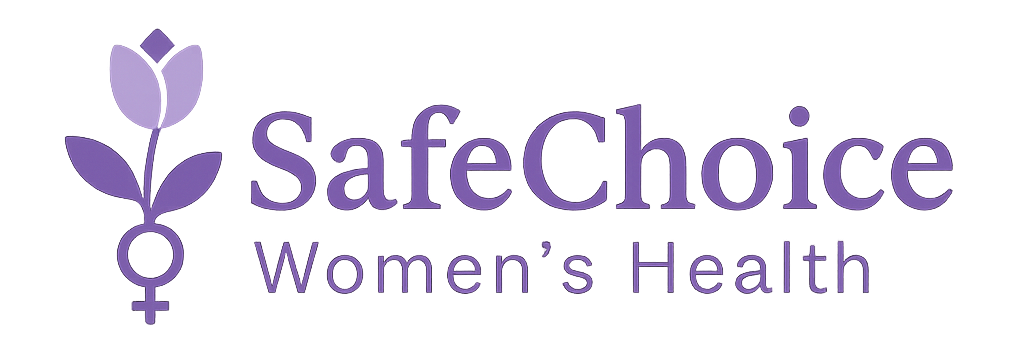Introduction to Abortion Pills
Abortion pills, medically referred to as medication abortion, are a method used to terminate a pregnancy through pharmaceuticals rather than surgical interventions. This approach typically involves a two-drug regimen: mifepristone and misoprostol. Mifepristone, often taken first, works by blocking the hormone progesterone, which is essential for maintaining a pregnancy. Following this, misoprostol is administered to induce contractions and facilitate the expulsion of the pregnancy tissue from the uterus. This combination of drugs has proven to be effective and is widely used in reproductive healthcare settings.
The historical context of abortion pills highlights a significant shift in reproductive rights and access to safe abortion methods over the past few decades. The approval of mifepristone by the U.S. Food and Drug Administration (FDA) in 2000 marked a turning point, enhancing options for women seeking to terminate a pregnancy within the early stages. Since then, many countries have followed suit, recognizing the importance of accessible and safe abortion methods for women’s health. The use of abortion pills differs from surgical procedures, which typically require a medical professional to physically remove the pregnancy. Instead, medication abortion allows individuals to choose a private, often earlier, and less invasive option for terminating a pregnancy.
Understanding the function of abortion pills is essential within the broader context of reproductive healthcare. These medications empower individuals with choices regarding their bodies and reproductive futures. Knowledge about these drugs can reduce stigma and misinformation surrounding abortion. Furthermore, it emphasizes the importance of comprehensive reproductive education, ensuring that individuals can make informed decisions when faced with an unplanned pregnancy. By providing insights into the workings of abortion pills, we contribute to a more informed dialogue about reproductive rights and health.
The Mechanism of Action
Abortion pills function through specific pharmacological actions that target the processes necessary for maintaining a pregnancy. The two primary medications utilized in medical abortion are mifepristone and misoprostol. Each plays a vital role in the abortion process through distinct mechanisms of action.
Mifepristone, also known as RU-486, is the first medication taken in a medical abortion regimen. It acts as an antiprogestin, effectively blocking the hormone progesterone, which is crucial for the continued growth and maintenance of the uterine lining during pregnancy. The disruption of progesterone allows the uterine lining to begin to break down, precipitating the termination of the pregnancy. This medication is usually administered within the first ten weeks of gestation and has been shown to be highly effective when followed by misoprostol.
Following mifepristone, the second medication, misoprostol, is taken within 24 to 48 hours. Misoprostol is a prostaglandin analog that stimulates uterine contractions. By inducing these contractions, misoprostol facilitates the expulsion of the pregnancy tissue from the uterus. It also helps to further soften and dilate the cervix, assisting in the overall process of terminating the pregnancy. The combination of these two medications has demonstrated a success rate of approximately 95-99% when administered within the recommended timeframe.
The timing of administration is essential for the efficacy of abortion pills. When taken appropriately, this medical approach to abortion allows for a safe and private experience. Understanding these mechanisms and the specific roles of mifepristone and misoprostol provides insight into how these medications work together to effectively terminate early pregnancies, preserving reproductive autonomy for those who choose this option.
Safety and Efficacy
Abortion pills, primarily mifepristone and misoprostol, are widely recognized for their effectiveness in terminating early pregnancies. Clinical studies indicate that the combined regimen of these medications has a success rate of approximately 95-98% within the first 10 weeks of gestation. This high level of efficacy has positioned abortion pills as a preferred choice for many seeking medical termination of pregnancy.
However, as with any medical treatment, the use of abortion pills is not without potential side effects. Common adverse effects may include nausea, vomiting, diarrhea, heavy bleeding, and cramping, which typically subside within a few days. While serious complications are rare, they can occur, emphasizing the importance of appropriate medical supervision during the process. The conditions under which abortion pills should be used play a critical role in ensuring a safe experience for the patient. It is vital that individuals seeking pharmaceuticals to terminate a pregnancy consult with a healthcare provider to confirm eligibility and understand any possible risks involved.
Medical guidance is essential not only for the safe consumption of these pills but also for patient follow-up care. After taking abortion pills, follow-up appointments are recommended to confirm that the pregnancy has been completely terminated. This helps mitigate the risks associated with retained products of conception or incomplete abortions, which may necessitate additional medical intervention. Furthermore, healthcare professionals can provide support and guidance during this time, ensuring that any concerns are addressed promptly.
In conclusion, while abortion pills present a highly effective option for those seeking to terminate early pregnancies, their safety hinges on proper usage under medical supervision. Understanding the potential side effects and ensuring follow-up care are crucial in safeguarding patients’ health and well-being during this process.
Legal and Accessibility Issues
The legal landscape surrounding abortion pills varies significantly across different regions, reflecting a complex interplay of cultural beliefs, political ideologies, and healthcare policies. In some jurisdictions, access to abortion pills such as mifepristone and misoprostol is broadly authorized, allowing individuals greater autonomy in making reproductive health decisions. Conversely, there are areas where stringent regulations impose significant barriers to obtaining these medications, thus limiting access for many who seek them.
In particular, the regulations can include mandatory waiting periods, parental consent requirements for minors, and restrictions on where and how the pills may be dispensed. These obstacles can result in delays or even deter individuals from pursuing a medical abortion altogether. Furthermore, the politicization of reproductive rights has led to ongoing debates within legislative bodies, often resulting in fluctuating laws that contribute to confusion and uncertainty for those seeking care.
Despite these challenges, the advent of telemedicine has emerged as a promising solution to enhance access to abortion pills. With telehealth appointments, individuals in restrictive regions may consult healthcare providers remotely, receiving prescriptions for abortion pills without the need to travel to a clinic. This method significantly reduces access barriers that are often faced by those in rural areas or those unable to afford transportation. However, it is essential to recognize that telemedicine itself faces regulatory hurdles, as some regions impose limits on its use in the context of reproductive health services.
This discussion of legal and accessibility issues surrounding abortion pills underscores the need for continued advocacy for reproductive rights and reform within healthcare systems. Expanding access to abortion pills through both legislative changes and innovative healthcare solutions, such as telemedicine, can empower individuals to make informed choices about their bodies and reproductive health.


